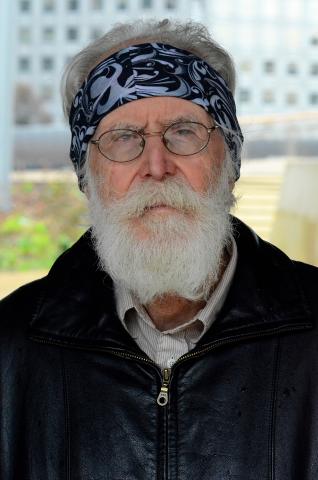The development of probability theory was originally motivated by problems that arose in the context of gambling or assessing risks. It has now become apparent that a thorough understanding of random phenomena is essential in today's world. For example, random algorithms underpin our weather forecast and large language models. In our quest for miniaturisation, we must consider effects like the random nature of impurities in crystals, thermal fluctuations in electric circuits, and decoherence of quantum computers. Talagrand has tackled many fundamental questions arising at the core of our mathematical description of such phenomena.

One of the threads running through Talagrand's work is to understand geometric properties of a high-dimensional phenomenon and to crystallise this into sharp estimates with broad scopes of applicability. This led him to obtain many influential inequalities. For instance, Talagrand derived powerful quantitative results to prove the sharp threshold phenomena that often appear in the study of phase transitions in statistical mechanics. He also obtained a useful inequality bounding the quadratic transportation cost distance between a probability measure and a Gaussian distribution by their relative entropy.
Much of Talagrand's work concerns the geometry of stochastic processes. A classical problem going back to Kolmogorov – arising for instance when one wants to analyse regularity properties of stochastic processes – is to estimate the supremum of a large collection of correlated random variables. Building on the works of Fernique and Dudley, Talagrand developed his theory of generic chaining, which provides sharp upper and lower bounds on the expectation of suprema of Gaussian processes. This illuminated the mysterious connection between the distance function (on the underlying index set) determined by the covariance of the process and the expectation of its supremum.
A key result in probability theory is the law of large numbers asserting that the normalised sum of independent random variables converges towards its mean. This normalised sum is therefore concentrated, using the terminology coined in the early work of Milman, or self-averaging, using physics terminology. It was gradually realised that concentration is ubiquitous, since many random variables defined as functions of a large number of independent random variables appeared to be close to their mean with high probability. In an amazing tour de force, Talagrand provided quantitative versions of this phenomenon that hold in great generality, including the case of discrete random variables. This result applies to functions of independent variables that are Lipschitz with respect to the Euclidean metric and convex, yielding one of several celebrated "Talagrand inequalities." It laid the groundwork for a non-asymptotic theory of independence applicable to high-dimensional statistical problems.
Since the works of Edwards and Anderson, physicists have been fascinated by the complex behaviour exhibited by disordered systems, which describe phenomena like magnetisation in the presence of impurities, and more recently also the energy landscapes arising in machine learning. In 1980, Parisi (Nobel Prize in Physics, 2021) proposed an expression for the free energy of one of the simplest models of this type, namely the Sherrington–Kirkpatrick model. Guerra showed rigorously that this formula is an upper bound for the free energy. In a groundbreaking article, Talagrand proved the complementary lower bound, hence completing the proof of the Parisi formula. This provided the foundation for the development of a mathematical theory of spin glasses and its applications in statistical learning.
Talagrand also obtained a rich variety of important results in measure theory and functional analysis. To cite only the most recent one, he answered a longstanding question by von Neumann and Maharam in the negative by showing that there exist submeasures which are exhaustive, but are not absolutely continuous with respect to any finitely additive measure. This fact implies the existence of radically new Boolean algebras.
Talagrand is an exceptionally prolific mathematician whose work has transformed probability theory, functional analysis, and statistics. His research is characterised by a desire to understand interesting problems at their most fundamental level, building new mathematical theories along the way. He disseminated many of his insights in the form of very influential research monographs. Combining technical virtuosity with deep analytical and geometric insights to construct new powerful tools and answer longstanding hard questions, Michel Talagrand has had and continues to have an enormous impact on mathematics and its applications.